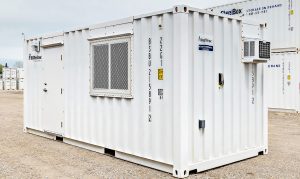In today's interconnected world, shipping plays a vital role in global trade and commerce. Understanding the different types of shipping is crucial for businesses and individuals involved in logistics, supply chain management, and e-commerce. In this blog post, we will delve into the three main types of shipping, exploring their unique characteristics, advantages, and applications.
- Ocean Freight Shipping:
Ocean freight shipping, also known as sea freight, is the backbone of international trade. It involves transporting goods in large quantities across oceans using cargo ships. This type of shipping offers several advantages, such as cost-effectiveness, high capacity, and global coverage. Ocean freight shipping is ideal for bulky or non-perishable goods that do not require fast delivery. It is commonly used for transporting raw materials, vehicles, machinery, and consumer goods.
Key Points:
- Overview of ocean freight shipping and its significance in global trade.
- Advantages and limitations of ocean freight shipping.
- Factors influencing ocean freight shipping costs.
- Containerization and its impact on ocean freight shipping efficiency.
- Key players and trends in the ocean freight shipping industry.
- Air Freight Shipping:
When speed and efficiency are paramount, air freight shipping emerges as the preferred choice. This type of shipping involves transporting goods by air, utilizing cargo planes and specialized air carriers. Air freight shipping offers rapid delivery, reliable transit times, and enhanced security. It is commonly used for perishable goods, high-value products, time-sensitive shipments, and urgent deliveries. Additionally, air freight shipping provides connectivity to remote locations and enables global supply chain integration.
Key Points:
- Overview of air freight shipping and its significance in time-sensitive industries.
- Advantages and limitations of air freight shipping.
- Factors influencing air freight shipping costs.
- Special considerations for shipping perishable goods and hazardous materials by air.
- Emerging technologies and innovations in the air freight shipping industry.
- Land Freight Shipping:
Land freight shipping, also known as road freight or trucking, is essential for domestic and regional transportation. It involves transporting goods overland using trucks, trailers, and other road vehicles. Land freight shipping offers flexibility, door-to-door service, and cost-effective solutions for shorter distances. It is commonly used for regional distribution, last-mile delivery, and intermodal transportation. Land freight shipping plays a crucial role in connecting ports, airports, and warehouses to their final destinations.
Key Points:
- Overview of land freight shipping and its significance in domestic and regional logistics.
- Advantages and limitations of land freight shipping.
- Factors influencing land freight shipping costs.
- Intermodal transportation and its integration with land freight shipping.
- Sustainable practices and future trends in land freight shipping.
Conclusion:
Understanding the three types of shipping - ocean freight, air freight, and land freight - is essential for businesses and individuals involved in global trade and logistics. Each type offers unique advantages and caters to specific requirements. By leveraging the right shipping method, organizations can optimize their supply chains, enhance customer satisfaction, and drive economic growth. Stay informed, adapt to industry trends, and make informed decisions to navigate the complex world of shipping successfully.




+ There are no comments
Add yours